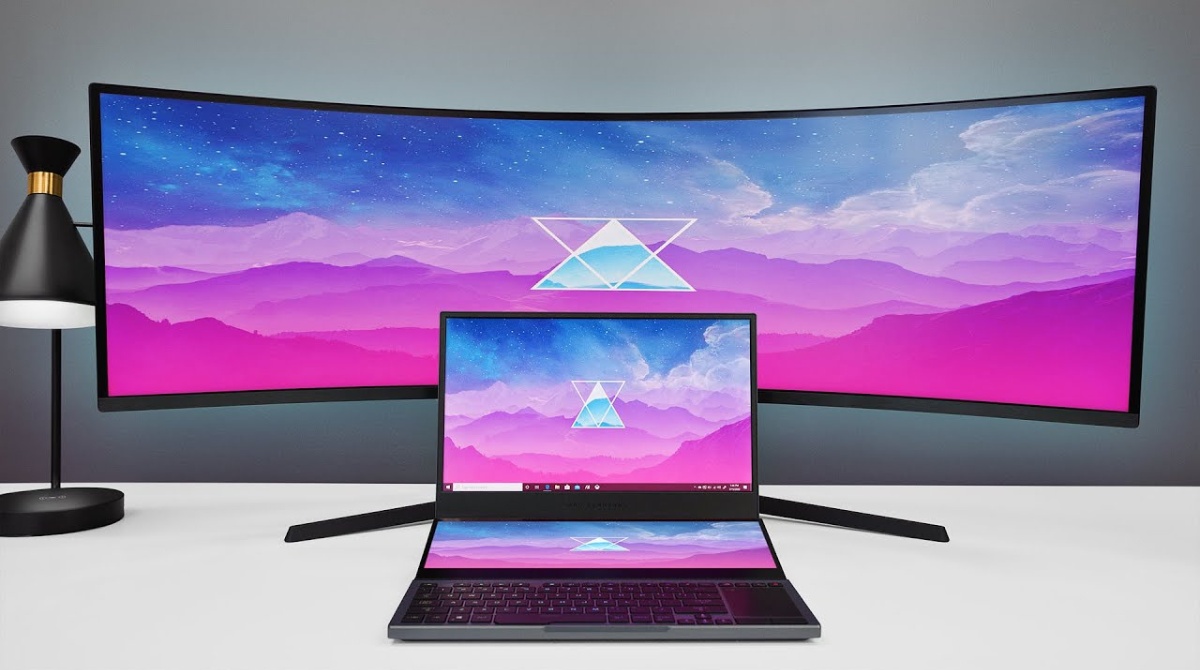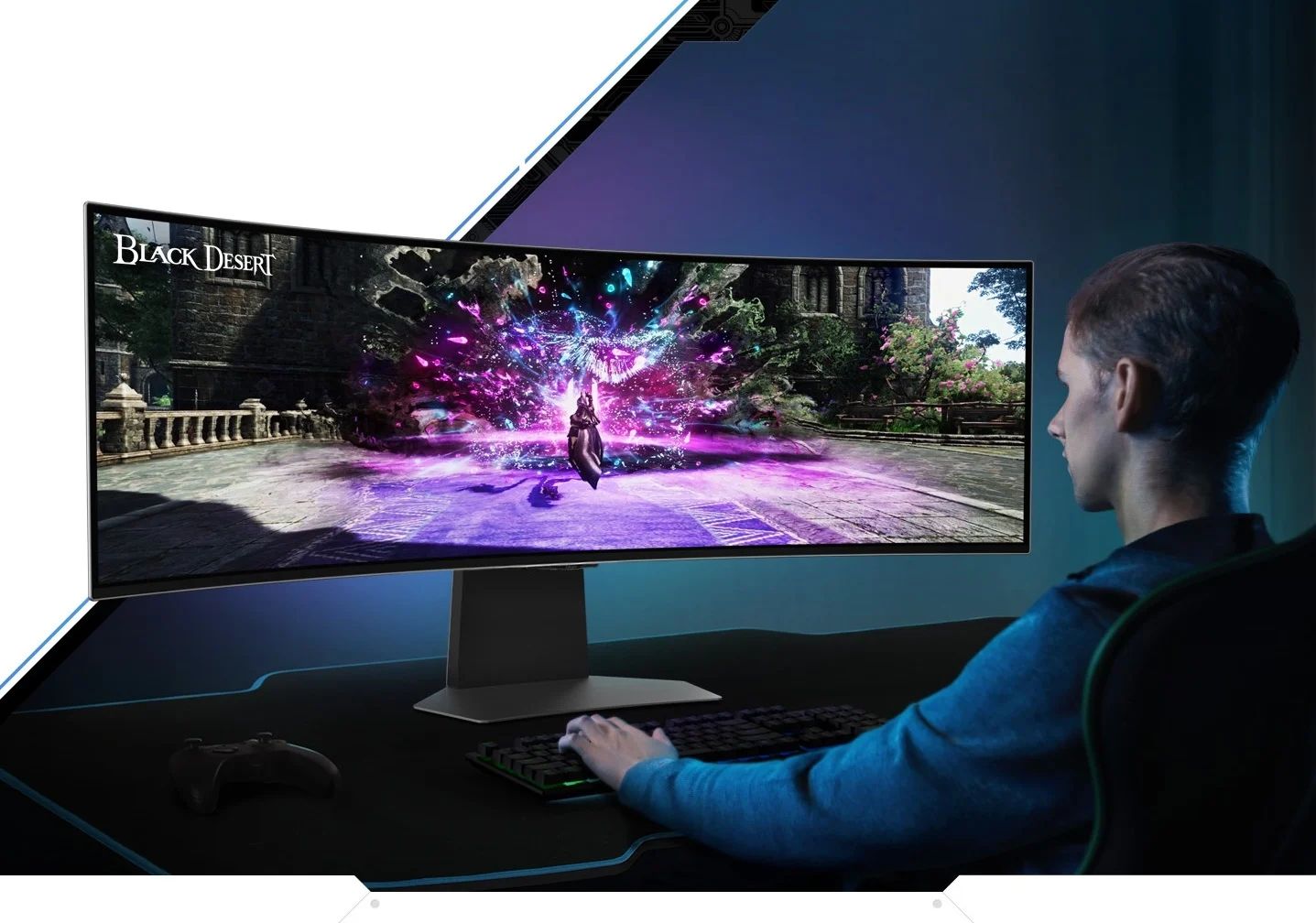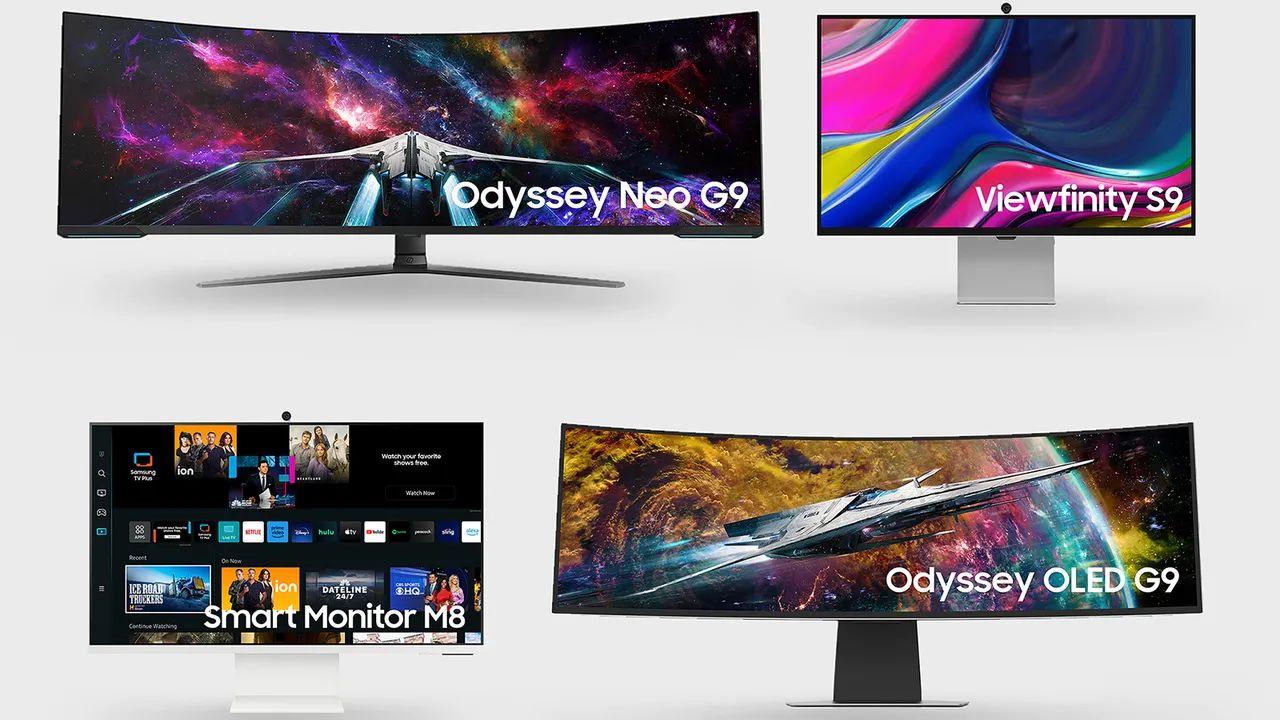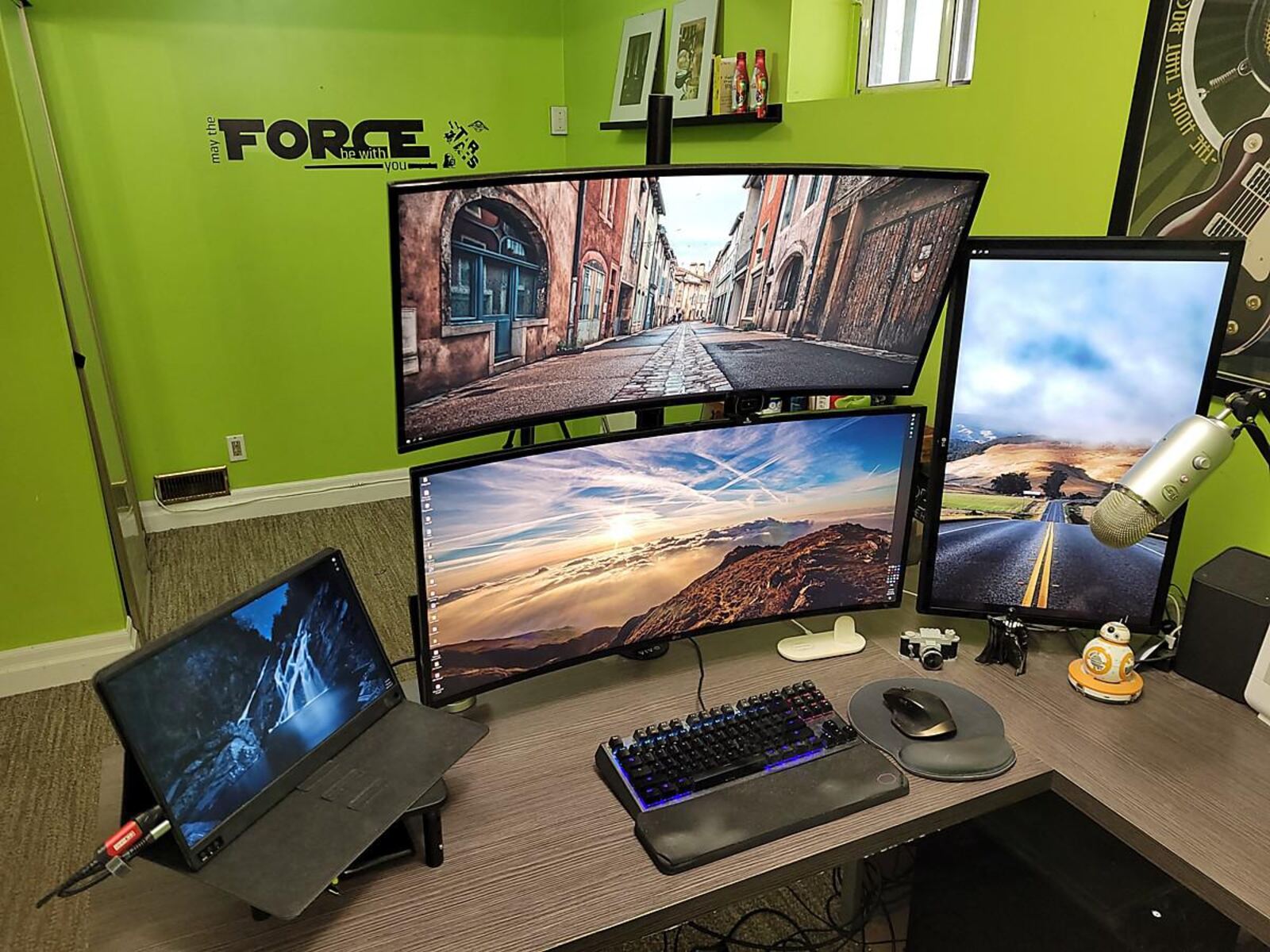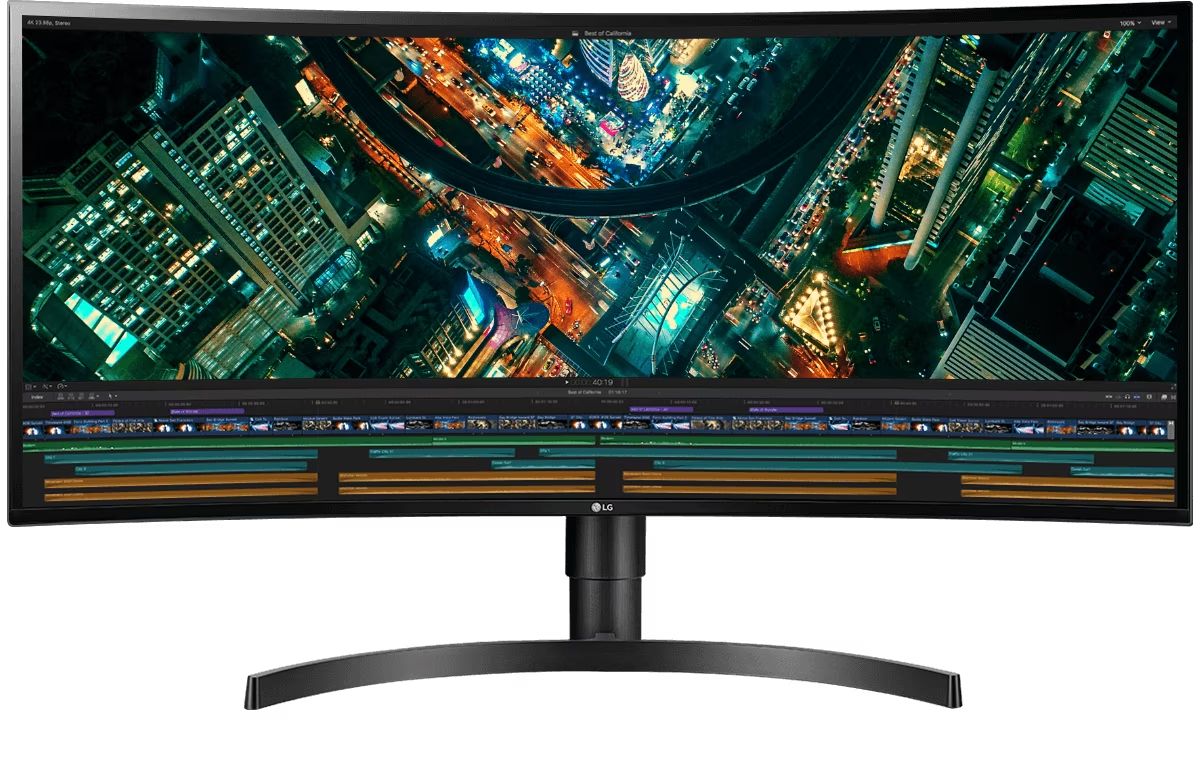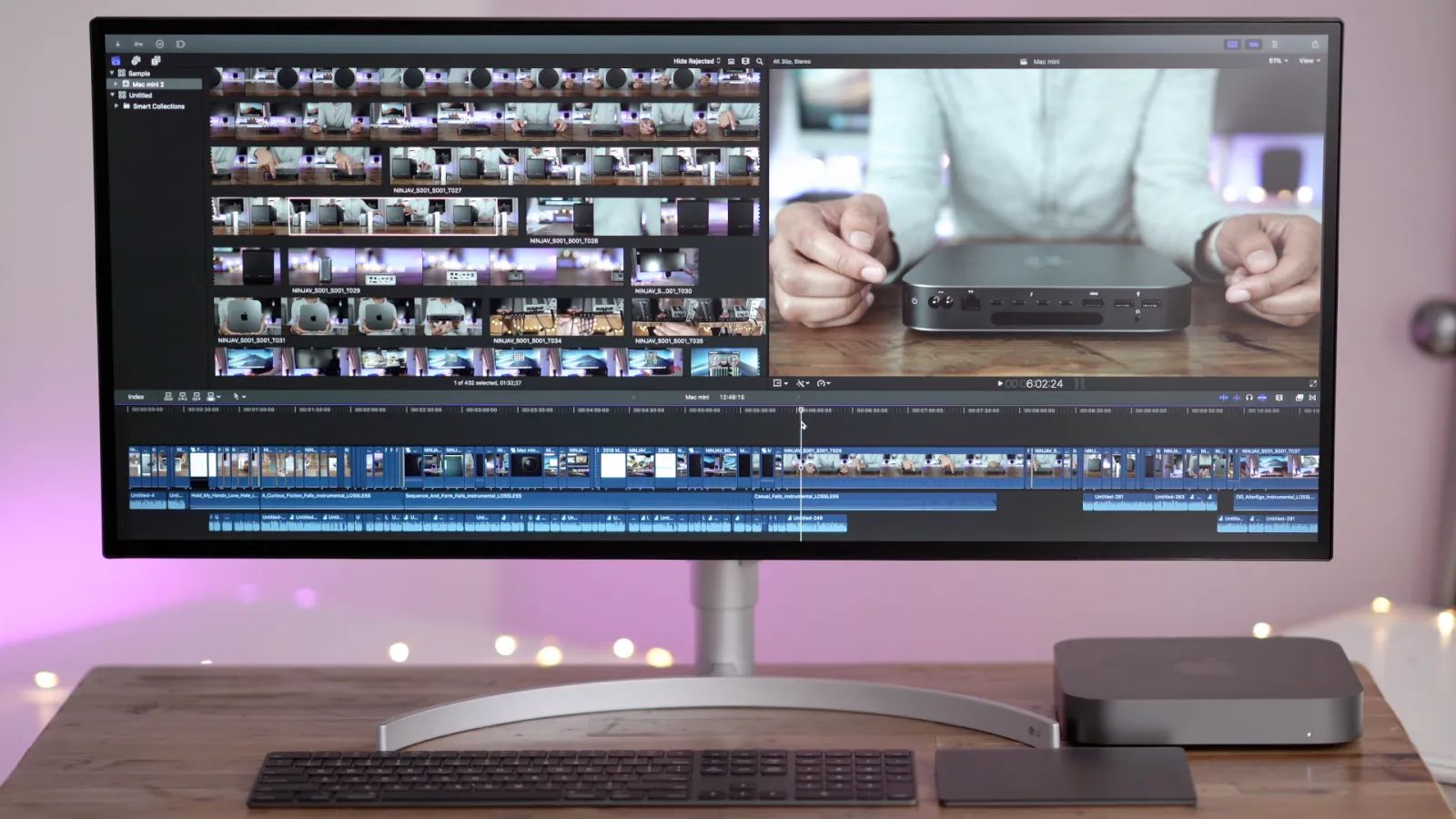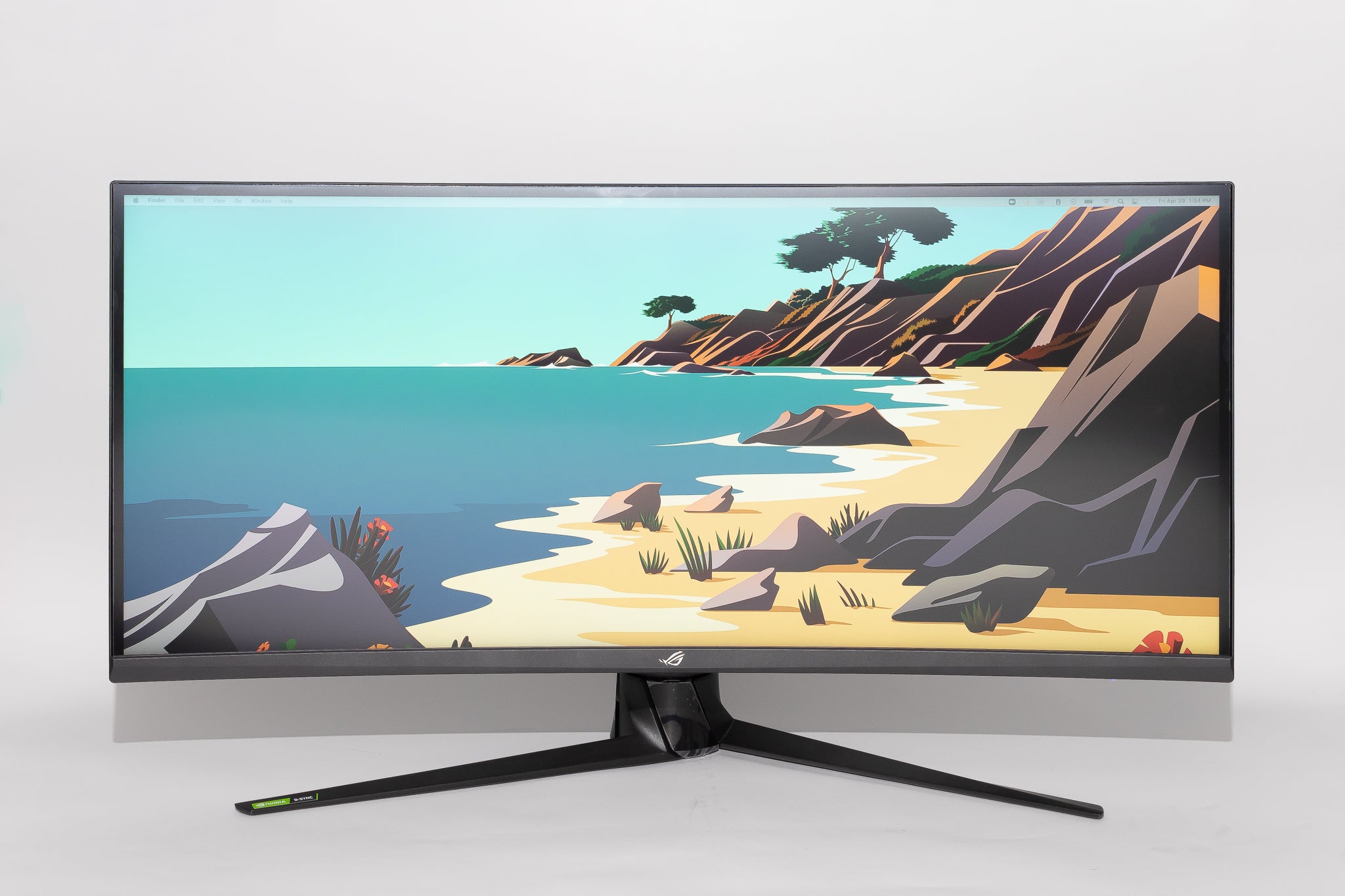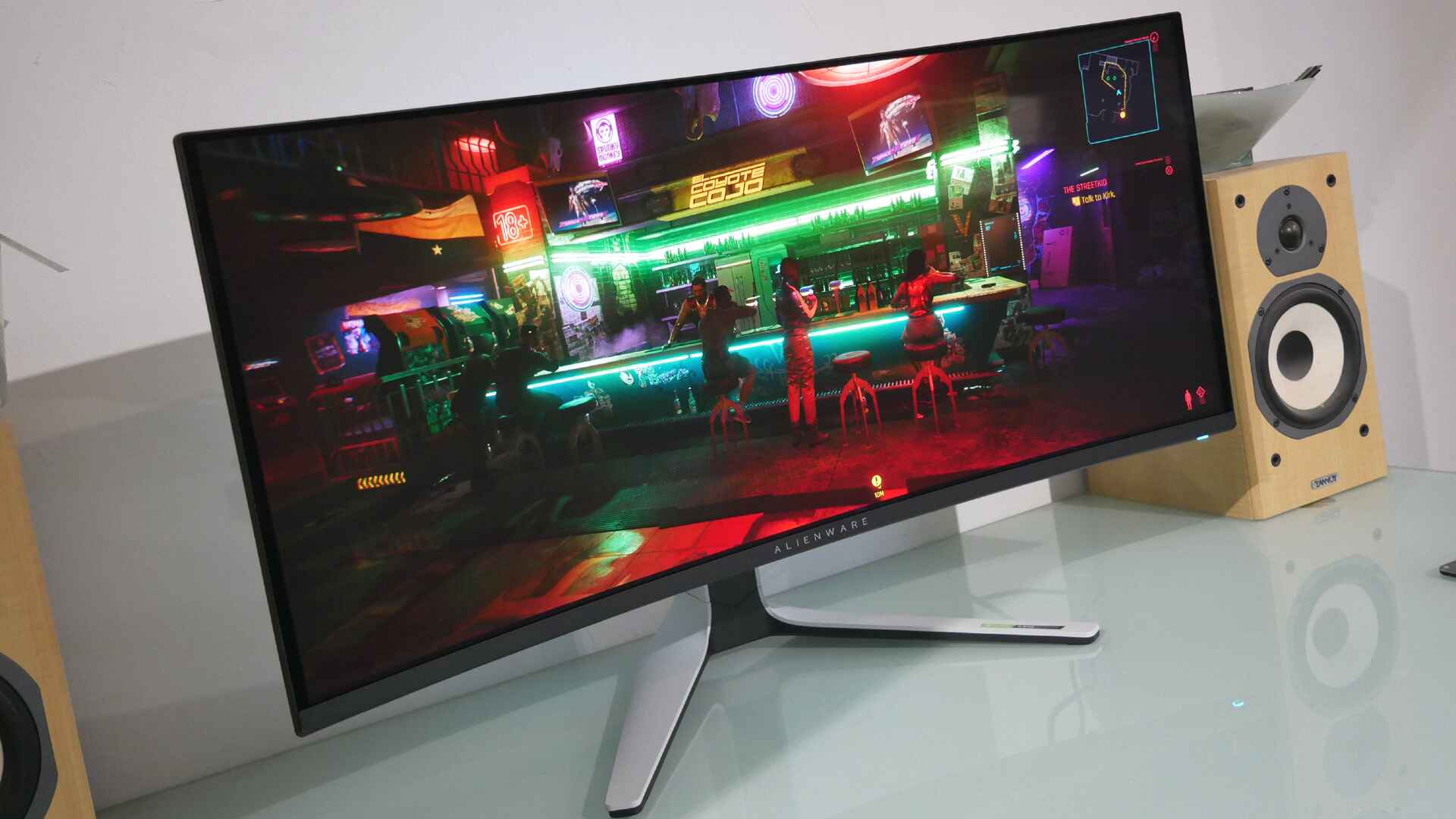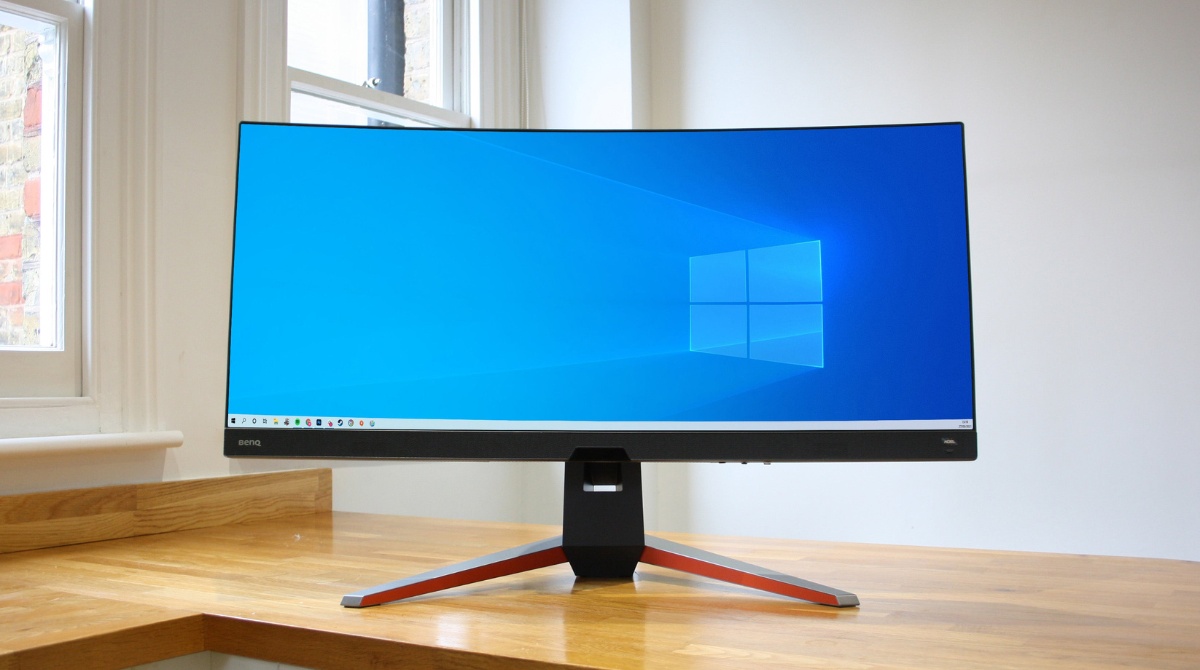Introduction
Welcome to the era of ultrawide monitors – where bigger and wider displays offer an immersive visual experience like never before. With more and more people embracing the productivity and entertainment benefits of ultrawide monitors, it’s no wonder you’re seeking guidance on how to get the most out of these impressive devices.
In this article, we’ll explore the world of ultrawide monitors and guide you through the process of connecting and optimizing your laptop’s display on these wider screens. Whether you’re a professional looking to boost your productivity, a gamer seeking a more immersive gaming experience, or simply someone who loves to enjoy movies and multimedia, we’ve got you covered.
With the help of this guide, you’ll learn how to properly connect your laptop to an ultrawide monitor, adjust display settings to maximize visual quality, configure the monitor for multitasking, optimize gaming performance, and even use the monitor for enhanced productivity.
If you’re eager to take your laptop and ultrawide monitor to the next level, keep reading. We’ll also discuss some common troubleshooting techniques to help you resolve any issues you might encounter along the way. By the end of this article, you’ll be ready to fully harness the power of your ultrawide monitor and elevate your laptop’s display experience.
Understanding Ultrawide Monitors
Before we delve into the technicalities of using an ultrawide monitor with your laptop, let’s take a moment to understand what exactly an ultrawide monitor is and why it has become such a popular choice among users.
An ultrawide monitor is a display with an aspect ratio of 21:9 or wider. This means that the screen is significantly wider than a traditional monitor, offering a wider field of view and a more immersive visual experience. Compared to standard widescreen monitors with a 16:9 aspect ratio, ultrawide monitors provide more horizontal screen space, allowing for improved multitasking capabilities and enhanced visual content.
The most common aspect ratios for ultrawide monitors are 21:9 and 32:9. The 21:9 aspect ratio provides a wider screen space for work and entertainment purposes, while the 32:9 aspect ratio, also known as super ultrawide, takes it even further by providing an exceptionally wide screen ideal for immersive gaming and multitasking.
Ultrawide monitors offer numerous advantages over traditional displays. One of the main benefits is the increased viewing area, which allows for side-by-side multitasking without the need for dual monitors. This makes them particularly appealing to professionals who require a larger workspace for tasks such as video editing, graphic design, or writing code.
Beyond productivity, ultrawide monitors greatly enhance the gaming experience. Their wider aspect ratio provides a more expansive view, giving gamers a competitive edge by revealing more of the game world. Additionally, many ultrawide monitors come equipped with features like high refresh rates and adaptive sync technologies, delivering smooth, tear-free gameplay.
While ultrawide monitors offer exceptional visual benefits, it’s important to ensure that your laptop can handle the increased display resolution and aspect ratio. In the next sections, we will guide you through the steps of connecting your laptop to an ultrawide monitor and optimizing the display settings for the best experience.
Connecting your Laptop to an Ultrawide Monitor
Connecting your laptop to an ultrawide monitor is a straightforward process that requires the right cables and some configuration adjustments. Here’s a step-by-step guide:
- Check the ports: Identify the available ports on your laptop and the ultrawide monitor. The most common connection options are HDMI and DisplayPort. Ensure that your laptop has a compatible port and that the ultrawide monitor has the corresponding input port.
- Choose the appropriate cable: Select the suitable cable to connect your laptop to the ultrawide monitor. Common options include HDMI to HDMI, DisplayPort to DisplayPort, or HDMI to DisplayPort adapters, depending on the available ports on both devices.
- Connect the cable: Plug one end of the cable into the port on your laptop and the other end into the input port on the ultrawide monitor.
- Power on the devices: Turn on your laptop and the ultrawide monitor. They should automatically detect each other and configure the display settings accordingly. However, if the display does not activate, you may need to adjust the settings manually.
- Adjust display settings on your laptop: Open the display settings on your laptop by right-clicking on the desktop and selecting “Display settings” or navigating through the system settings. Ensure that the display resolution is set to the recommended resolution for the ultrawide monitor. You can also adjust other settings such as brightness, contrast, and color calibration to your preference.
- Configure display settings on the ultrawide monitor: Most ultrawide monitors offer on-screen menus that allow you to customize display settings. Use the monitor’s built-in controls to adjust settings like aspect ratio, refresh rate, and picture mode. Consult the user manual or the manufacturer’s website for specific instructions on accessing and navigating the monitor’s settings.
- Test the connection: Display a test image or open a program to ensure that the display appears correctly on the ultrawide monitor. If there are any display issues or the image appears distorted, double-check the cable connections and the display settings on both your laptop and the monitor.
By following these steps, you should be able to successfully connect your laptop to an ultrawide monitor and enjoy the expanded screen space and immersive visual experience.
Adjusting Display Settings on your Laptop
Once you have connected your laptop to an ultrawide monitor, it’s important to adjust the display settings to ensure optimal visual quality and usability. Here are some key settings to consider:
1. Display Resolution: Open the display settings on your laptop and adjust the resolution to match the native resolution of the ultrawide monitor. The native resolution typically provides the best clarity and ensures that content appears sharp and properly scaled on the wider screen. Keep in mind that using a lower resolution may result in a stretched or distorted display.
2. Scaling: Due to the wider aspect ratio of the ultrawide monitor, some applications and text may appear too small. You can adjust the scaling settings in the display settings of your operating system to increase the size of text, icons, and other graphical elements. Experiment with different scaling options to find what works best for you.
3. Orientation: Depending on your preference and the physical positioning of the ultrawide monitor, you may want to adjust the screen orientation. In the display settings, you can choose between landscape and portrait modes. For most users, landscape mode is the default and preferred orientation for ultrawide monitors.
4. Brightness and Contrast: Adjust the brightness and contrast settings to achieve a comfortable and visually appealing viewing experience. Many laptops have dedicated function keys or software controls that allow you to quickly adjust these settings. Alternatively, you can access them through the display settings menu.
5. Color Calibration: For accurate and vibrant colors, consider calibrating the monitor’s color settings. Your laptop may have built-in color calibration tools or you can use third-party calibration software. Calibration ensures that colors are displayed consistently and accurately across applications and devices.
Remember to periodically check and readjust the display settings based on your individual preferences and the lighting conditions in your workspace. Regularly updating and calibrating the settings will help maintain an optimal visual experience on your laptop’s ultrawide monitor.
Configuring the Ultrawide Monitor
Configuring the settings on your ultrawide monitor is crucial to ensure the best possible visual experience and usability. While specific configurations may vary depending on the monitor model and manufacturer, here are some general settings to consider:
1. Aspect Ratio: Confirm that the aspect ratio is set to match the native resolution of the ultrawide monitor, typically 21:9 or 32:9. This ensures that the image displayed on the screen is not stretched or distorted.
2. Refresh Rate: If your ultrawide monitor supports it, consider adjusting the refresh rate to a higher value for smoother motion and reduced screen tearing during fast-paced gaming or video playback. Popular options include 60Hz, 120Hz, or even 144Hz, depending on the capabilities of your monitor.
3. Picture Mode: Many ultrawide monitors offer preset picture modes optimized for different activities, such as gaming, movie watching, or reading. Experiment with these presets to find the one that best suits your needs. You can also fine-tune individual settings like brightness, contrast, and color temperature for a more customized viewing experience.
4. Split-Screen and Picture-by-Picture: Take advantage of the ultrawide monitor’s multitasking capabilities by exploring the split-screen and picture-by-picture features. These allow you to display multiple windows or inputs side by side, enhancing your productivity and workflow. Consult the monitor’s user manual or on-screen menu for instructions on how to activate and customize these features.
5. Gaming Enhancements: If you’re a gamer, explore the gaming-oriented features offered by your ultrawide monitor. These may include technologies like FreeSync or G-Sync for smoother gameplay, gaming presets optimized for specific genres, and customizable crosshair overlays or game-specific display settings.
6. Energy-Saving Features: To conserve power and reduce eye strain, consider enabling energy-saving features on your ultrawide monitor, such as automatic sleep mode, ambient light sensors to adjust brightness based on the environment, or blue light filters to reduce eye fatigue.
Remember to consult the user manual or the manufacturer’s website for your specific ultrawide monitor model to access advanced settings and features that may be unique to your monitor.
By taking the time to configure your ultrawide monitor’s settings according to your preferences and requirements, you can ensure that it delivers the best possible visual experience and enhances your workflow, gaming, and entertainment activities.
Multitasking on an Ultrawide Monitor
One of the biggest advantages of using an ultrawide monitor is the ability to multitask seamlessly. The extra screen real estate allows you to have multiple windows and applications open side by side, enhancing your productivity and workflow. Here are some tips for effective multitasking on an ultrawide monitor:
1. Divide the screen: Take advantage of the wide aspect ratio by dividing the screen into two or more sections. Most operating systems have built-in split-screen functionality that allows you to snap windows to specific areas of the screen. This makes it easy to work on different tasks simultaneously or reference information from multiple sources.
2. Use virtual desktops: Alongside split-screen, consider utilizing virtual desktops to further boost your productivity. Virtual desktops allow you to create separate workspaces where you can group related windows and applications. This enables you to switch between different sets of tasks quickly and keep your workspace organized.
3. Explore window management tools: Third-party window management tools provide advanced features for managing windows on your ultrawide monitor. These tools offer functionalities such as resizing and positioning windows with keyboard shortcuts, creating custom window layouts, and setting up hotkeys to move windows between different sections of the screen.
4. Customize your workflow: Every individual has different work preferences, so experiment with different multitasking workflows to find what works best for you. For example, you may want to dedicate one section of the screen to your main work window while keeping communication and reference applications in another section.
5. Enhance productivity with monitor utilities: Explore productivity-focused software solutions designed specifically for ultrawide monitors. These utilities provide features like customizable virtual control panels, keyboard shortcuts, screen overlays, and quick access to commonly used applications, making it easier to manage and switch between tasks efficiently.
6. Use ultrawide-friendly applications: Some applications are optimized for ultrawide monitors, allowing you to utilize the wider aspect ratio effectively. Look for applications that offer extended workspace support or specific features for managing windows on ultrawide displays.
By combining these strategies, you can harness the full multitasking potential of your ultrawide monitor, optimizing your workflow and boosting your productivity.
Optimizing Gaming on an Ultrawide Monitor
Gaming on an ultrawide monitor offers a truly immersive experience, allowing you to see more of the game world and enjoy enhanced visuals. To make the most of your gaming sessions, consider the following tips for optimizing gaming on an ultrawide monitor:
1. Check game compatibility: Ensure that the games you play support the ultrawide aspect ratio. Most modern games offer native support, providing an immersive widescreen experience. However, older games or certain titles may require additional tweaks or patches to properly display on an ultrawide monitor.
2. Adjust in-game settings: Explore the graphics settings within the games you play. Many games allow you to customize the resolution, field of view (FOV), and aspect ratio. Set the resolution to match the native resolution of your ultrawide monitor and adjust the FOV to take advantage of the wider aspect ratio, providing a more expansive view.
3. Consider ultrawide-optimized games: Some games are specifically designed to make the most out of ultrawide monitors, offering enhanced gameplay and visual experiences. Look for games that advertise ultrawide support or utilize features like split-screen HUDs and seamless transitions between different sections of the screen.
4. Utilize adaptive sync technologies: If your monitor supports adaptive sync technologies like AMD FreeSync or NVIDIA G-Sync, make sure they are enabled. These technologies synchronize the monitor’s refresh rate with your graphics card, reducing screen tearing and providing a smoother gaming experience.
5. Experiment with ultrawide-specific features: Many ultrawide monitors offer additional gaming features such as customizable crosshair overlays, game-specific display presets, or advanced motion blur reduction settings. Explore your monitor’s settings menu or consult the user manual to take advantage of these features.
6. Multiplayer advantages: In multiplayer games, the wider field of view provided by an ultrawide monitor can grant you a competitive advantage. You’ll have a broader perspective, giving you more situational awareness and allowing you to spot enemies or key objectives sooner.
Remember to regularly update your graphics card drivers and monitor firmware to ensure compatibility and access the latest optimizations for gaming on an ultrawide monitor. With the right settings and hardware, gaming on an ultrawide monitor can truly elevate your gaming experience to new heights.
Adjusting Display on an Ultrawide Monitor for Productivity
An ultrawide monitor provides a spacious workspace that can greatly enhance productivity. By optimizing the display settings and utilizing productivity-focused techniques, you can maximize your efficiency and workflow. Here are some tips for adjusting the display on an ultrawide monitor for maximum productivity:
1. Split-screen and window management: Take advantage of the wide aspect ratio by using split-screen functionality or window management techniques. Split the screen into sections and have multiple applications or documents open side by side for easy reference and multitasking. This allows you to view multiple sources of information simultaneously and seamlessly switch between tasks.
2. Virtual desktops: Utilize virtual desktops to further organize your workspace. Create separate desktops for different projects or work-related tasks. This helps reduce clutter and allows you to switch between different contexts without distractions. Use keyboard shortcuts to navigate between desktops quickly.
3. Taskbar and shortcut placement: Customize the placement of your taskbar and shortcuts to maximize efficiency. Consider placing commonly used applications or shortcuts to important files within easy reach on either side of the screen. This allows for quick access and reduces the time spent searching for frequently used tools.
4. Use productivity apps: Explore productivity applications that optimize your workflow on an ultrawide monitor. These apps can help manage windows, automate repetitive tasks, and provide shortcuts for efficient navigation and organization. Look for tools that enhance window management, provide virtual desktop support, or automate common actions.
5. Customizable screen layouts: Experiment with customizable screen layouts to suit your workflow. Some ultrawide monitors come with pre-defined templates or software that allow you to save and switch between different screen arrangements. This can be particularly useful if you have specific work setups for different tasks or projects.
6. Ergonomic considerations: Position your ultrawide monitor and adjust its height, tilt, and distance for optimal viewing comfort and ergonomics. Ensure that the screen is at eye level, reducing strain on your neck and eyes. Consider using a monitor stand or adjustable mount for flexibility in positioning.
7. Utilize keyboard shortcuts: Learn and utilize keyboard shortcuts to navigate between applications, switch windows, and perform common tasks. Keyboard shortcuts can significantly improve your productivity and eliminate the need for frequent mouse movements, saving time and reducing distractions.
By implementing these suggestions and personalizing your display settings, you can create an efficient and organized workspace on your ultrawide monitor, ultimately boosting productivity and workflow efficiency.
Troubleshooting Common Issues with Ultrawide Monitors
While ultrawide monitors can greatly enhance your computing experience, like any technology, they may encounter some issues from time to time. Here are some common problems you may encounter when using an ultrawide monitor and potential solutions to troubleshoot them:
1. Resolution and Display Issues: If you encounter resolution or display issues, ensure that both your laptop and ultrawide monitor are set to the correct native resolution. Check the display settings in your operating system and monitor’s on-screen menu to confirm the settings match. If the resolution remains problematic, try updating your graphics card drivers.
2. Incorrect Aspect Ratio: If the aspect ratio appears distorted or stretched on your ultrawide monitor, verify that the aspect ratio is correctly set. Sometimes, the monitor settings may default to a different aspect ratio. Navigate to the monitor’s settings menu and adjust the aspect ratio to match the native resolution.
3. Connectivity Problems: In case you experience connectivity issues, ensure that the cables connecting the laptop and ultrawide monitor are properly inserted and securely tightened. Try using different cables or ports to identify any potential faults. Additionally, make sure that the laptop’s display output is correctly configured to the ultrawide monitor in your operating system’s display settings.
4. Refresh Rate and Performance: If you notice screen tearing or stuttering during gaming or video playback, verify that your ultrawide monitor’s refresh rate is set correctly and matches your graphics card’s capabilities. Enable adaptive sync technologies, such as AMD FreeSync or NVIDIA G-Sync, if supported, to synchronize the monitor’s refresh rate with your graphics card and reduce screen tearing.
5. Color Calibration: If the colors on your ultrawide monitor appear inaccurate or washed out, consider calibrating the monitor’s color settings. Use built-in calibration tools in your operating system or invest in external calibration hardware for more precise color calibration. Alternatively, check the monitor’s manufacturer website for color calibration profiles specific to your model.
6. Compatibility with Software: Some older software or certain applications may not be optimized for ultrawide monitors, resulting in improper scaling or stretched displays. In such cases, try adjusting the compatibility settings for the affected application or consult the software’s support documentation for potential solutions.
7. Power Management: Occasionally, ultrawide monitors may experience power management issues, such as not resuming from sleep mode or turning on/off erratically. Ensure that the monitor firmware is up to date and adjust the power management settings in both your monitor’s menu and operating system to prevent power-saving features from interfering with normal operation.
If you continue to experience issues with your ultrawide monitor, it’s recommended to consult the user manual, reach out to the manufacturer’s support, or seek assistance from online forums or communities dedicated to ultrawide monitors. They can provide specific solutions tailored to your monitor model and resolution any persisting issues.
Conclusion
Ultrawide monitors offer a wide range of benefits, from immersive gaming experiences to enhanced productivity and multitasking capabilities. By understanding the fundamentals of ultrawide monitors and optimizing their display settings, you can make the most out of these impressive devices.
In this article, we explored how to connect your laptop to an ultrawide monitor, adjust display settings on both the laptop and the monitor, and configure the monitor for specific activities like gaming and productivity. We also provided troubleshooting tips for common issues that you may encounter along the way.
Remember to take advantage of split-screen, virtual desktops, and customized window layouts to maximize your multitasking capabilities. Explore ultrawide-optimized games and utilize adaptive sync technologies for an optimal gaming experience. Adjust your display settings for productivity, keeping in mind factors like resolution, scaling, and window management.
If you encounter any issues, such as resolution problems, connectivity difficulties, or color inaccuracies, refer to the troubleshooting section for potential solutions. Additionally, seek support from the manufacturer’s resources or online communities dedicated to ultrawide monitors.
By following these guidelines and adapting them to your specific needs, you can fully harness the power of your ultrawide monitor and enjoy a more immersive and productive computing experience.







